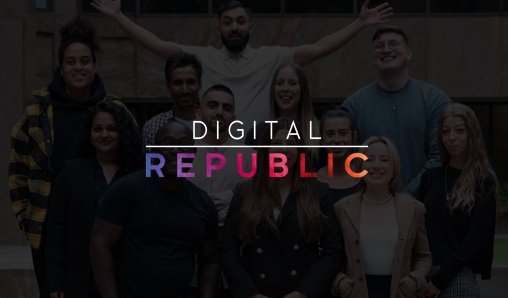
Video Interview Guide: Tips For A Successful Interview
- Find a quiet, private, well-lit place, free from possible interruptions.
- Ensure your internet connection is stable.
- Check that your computer’s audio is working.
- Test your computer’s webcam.
- Close any unnecessary web browser tabs and applications.
- Dress professionally and avoid bright colours.
- Have a pen, notepad and copy of your resume on your desk.
- When listening, nod and smile to show you are engaged.
- Use hand gestures when appropriate.
- Place your phone in silent mode.
Video job interviews are an increasingly common part of the hiring process. These interviews can take several forms. If you have one coming up, it’s a good idea to familiarize yourself with all the variables so you can be prepared. In this guide, we’ll walk you through the types of video interviews, what you should wear, and helpful tips on body language and eye contact.
Before we get into the specifics, take note that the content of a video job interview can be similar to in-person or phone interviews. As a result, the following will also be useful to you as you prepare:
Video interview locations
In-office video interviews
Some video interviews will take place at your potential employer’s office. This may happen if you’re interviewing with someone at the company who is based in another location. In this situation, you’ll want to follow the best practices for an in-person interview: prepare beforehand, dress appropriately, arrive early and be respectful of everyone you encounter.
When you arrive at the office, you’ll typically be led to a room with all the equipment you’ll need for your video interview. Ask the person who brought you to the room to help you set up the interview and make sure everything is working before they leave. You may also want to ask them how you can find them if your audio or video connection stops working at any point.
Remote video interviews
Some video interviews take place outside of the potential employer’s office. In this case, you’ll be responsible for finding a quiet location with a good internet connection and a computer or laptop with a webcam. Specifically, you’ll need:
- An internet connection with a bandwidth speed of at least 1 megabits per second.
- A laptop or desktop computer with a webcam. In some cases, a tablet or smartphone may also be an option.
- Headphones with a built-in microphone or headphones and a separate microphone.
- A quiet, private and well-lit place where you won’t be interrupted by other people, pets or noises. Position your webcam so that you have a neutral background that’s free from distractions. Avoid coffee shops and other communal spaces.
If you don’t have these resources already, you may want to consider the following:
- Explore the resources available at the public library in your area. Some libraries have private rooms you can reserve and may be able to loan you the equipment you need.
- Ask friends if you can borrow equipment.
- Rent equipment.
Live vs. pre-recorded video interviews
Some interviews will be live, meaning that you might join a video conference from a link that the employer shares with you, or you might receive a call via Skype, Google Hangouts or another video conference provider. Once connected, you’ll be able to see and speak with an interviewer on the other end.
If you’re using a personal Skype or Google account, make sure that you have a professional username and check your privacy settings. If you have any concerns about whether your username is professional enough, you may want to set up a new account for your video interviews just in case.
There are times when an employer may use pre-recorded video interviews. In this format, the employer will give you instructions on how to join the interview. Instead of being connected with a person, you’ll be prompted to answer interview questions that have been pre-recorded or appear in writing on the screen. You’ll record your answer to each question and the employer will review the recording later. There is often a time limit for your answers, and you may be given more than one chance to record each answer.
The pre-recorded format can feel unnatural to some people. Try to imagine that you are having a live conversation. Your preparation for the interview will be especially useful in this setting—be sure you have your answers at the ready.
Whether your video interview is live or pre-recorded, make sure that you’ve closed other apps or windows on your computer that could interrupt the conversation or slow the internet connection. Set your phone to silent before you begin the conference.
What to wear for a video interview
For your video interview, you should dress professionally—the same way you would for an in-person interview. Research the company culture before your interview so you have a good idea of what’s appropriate.
To look your best on camera, avoid bright colors and patterns and opt for softer colors instead. If you are wearing a tie, wear a solid color rather than a patterned one. If you wear glasses, adjust the lighting in the room to reduce glare from the lenses.
Position the camera so that you are looking up slightly and centered on the screen. While it’s likely that the interviewer will only see your upper half, it’s still a good idea to wear professional pants or a skirt in case you need to stand up for any reason.
Video interview body language
Eye contact is very important during an in-person interview, and you want to convey that same level of connection during a video interview. Here’s how: Avoid the instinct to look directly at your interviewer on the screen while you’re answering a question. Instead, when you speak, you want to direct your gaze at the webcam. When you do this, your eyes are more likely to align with the interviewer’s eyes on the other end. When you’re listening, you can look back at the screen.
Throughout the interview, keep your mood upbeat and convey optimism with your body language. One way to achieve this is to have good posture. Sit in your chair with your back straight and your shoulders open. Feet can be planted on the floor and arms can rest in your lap or on the desk.
When you’re listening, nod and smile when appropriate to communicate that you’re giving them your full attention. Use hand gestures when it feels appropriate and keep your movements close to your body. Avoid fidgeting or letting your gaze drift away from the device.
Practice and tech set up
To get used to the technology and the body language of a video interview, it’s useful to do some practice video calls with friends or family members. Ask them to give you candid feedback about your appearance and eye contact. Run through it a few times until things start to feel natural.
This practice can make all the difference in your interviews. Set aside time in your schedule in the weeks and days leading up to your interview—you’ll find your confidence growing as you become more comfortable in front of the camera.
On the day of your interview, review this checklist as you’re setting up:
- Ensure that you won’t be interrupted, either by locking the door or by alerting others that you can’t be disturbed (a note on the door of the room as well as the door to the outside may be helpful).
- Clear the desk space, except for a notepad and pen/pencil for you to take notes.
- Have a copy of your resume and any other notes ready for you to reference.
- Set out glass or bottle of water for yourself.
- Check that your webcam is working.
- Check that your audio is working.
- Close any windows, tabs or applications on your computer that you’re not using.
- Check your internet connection and make sure you’re not downloading anything in the background.
- Set your phone to silent.
- Check that the background behind you is neutral and free from clutter.
- Adjust the lights in the room. If things appear dark or dim, you may want to bring in an extra desk lamp to brighten the space.
If things go wrong
With technology, there’s always a chance things could go wrong. Here are some backup plans to have ready just in case.
- If your video or audio stops working
Before the interview, ask the interviewer for a phone number where you can reach them if you experience technical difficulties. If the video cuts out, call them at that number. Ask if you can continue the interview by phone or if you can reschedule.
-
If noise interrupts the conversation
If noises (sirens, construction, etc.) interrupt your video interview, apologize for the interruption and ask for a few moments until the noise has subsided. You may want to mute the microphone if the noise is severe.
-
If someone enters the room unexpectedly
If family members, housemates or pets enter the room while you’re interviewing, apologize to the interviewer, ask for a few moments, mute your microphone and turn off your camera, and then step away to deal with the interruption. Make sure that the room is secure before beginning the interview again.
As with any job interview, you should conclude by thanking the interviewer for their time. Send a follow-up thank you email later that day (or the next day if your interview was in the evening). This message may help build a stronger connection with your potential employer and help you progress to the next step.
Originally posted by Indeed Career Guide
If you found this blog useful, check out this one too!
Digital analytics, data science, cloud, programmatic or optimisation expert, and looking for a job at the moment? Check out our latest live vacancies here
Contact us submitting a quick form here. We are here to support you!



